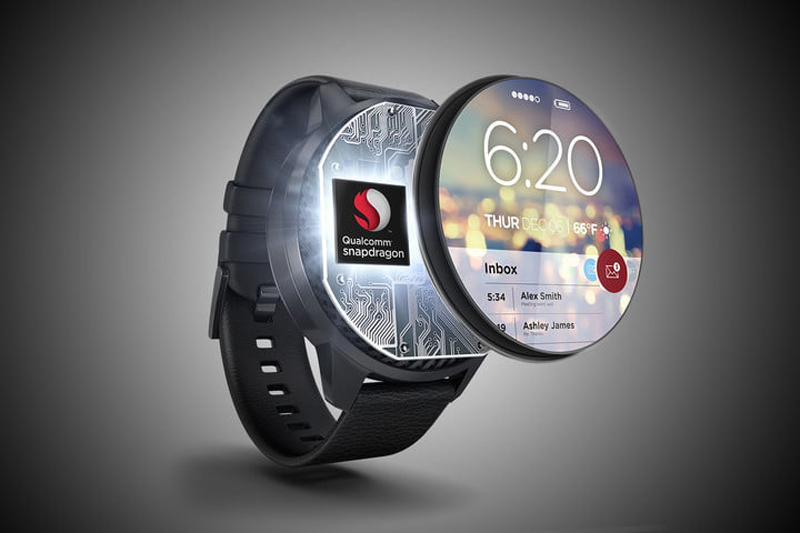Why it matters: Paired with Google's reworked Wear OS, Android smartwatches powered by Qualcomm's new Snapdragon Wear 3100 have their best opportunity to date to gain meaningful market share.
Qualcomm earlier this summer announced the Snapdragon Wear 2500, a mid-range SoC designed specifically for smartwatches for kids. Now, the company's primary wearable platform, the Snapdragon Wear 2100, is getting a much-needed refresh.
Originally launched in early 2016, the Snapdragon Wear 2100 has since been upstaged by offerings from Apple and Samsung. Qualcomm levels the playing field today with the introduction of the Snapdragon Wear 3100.
The company's latest packs four A7 cores, a digital signal processor and an ultra-low-power co-processor in a configuration Qualcomm calls big-small-tiny. The A7 cores handle intensive tasks like app switching while the two smaller chips tackle background chores, monitor sensors and so on.
By allocating jobs to the best hardware for the task, Qualcomm says smartwatches based on the Snapdragon Wear 3100 will exhibit much better battery life. Real-world results will vary based on device and usage but on average, users can expect anywhere between four to 12 hours of additional runtime compared to Wear 2100-equipped devices.

Qualcomm also worked with Google to develop three new operating modes to promote better battery life. Enhanced ambient mode shows a basic watch face UI with a moving second hand, improved brightness and live complications (any function beyond telling time). Traditional watch mode, meanwhile, foregoes those bells and whistles in favor of simply telling the time while a dedicated sports mode - set to arrive post-launch with a "sports customer" - will enable up to 15 hours of GPS and heart-rate tracking.
Qualcomm's first Snapdragon Wear 3100 customers include Fossil Group, Louis Vuitton and Montblanc. The first devices powered by the new platform are expected in Q4 2018.
